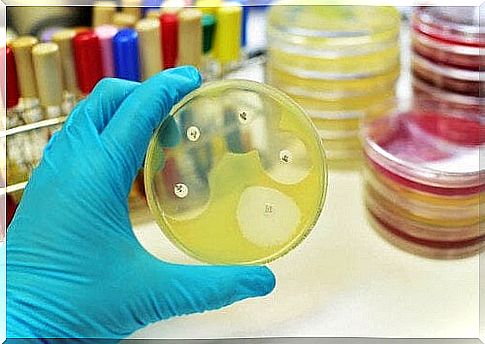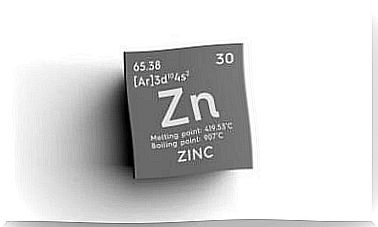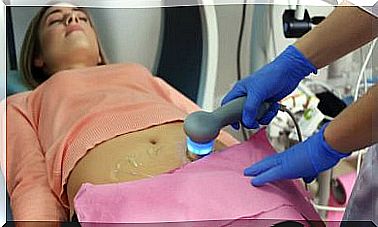Rifampicin: Dose And Indications

Rifampicin is a semi-synthetic ansamycin antibiotic with a bactericidal effect. It is a semi-synthetic compound used as the first choice for tuberculosis treatment.
However, it should not be used alone as this would encourage the development of resistance by bacteria. Therefore, it is given together with other medications, as we will explain later.
Rifampicin also has other indications, such as treating patients who are carriers of the bacterium Neisseria meningitidis and who do not have symptoms. It is also used in the prophylactic treatment of Haemophilus influenzae type B and in the treatment of leprosy. But it also has other, lesser-known uses.
Rifampicin – a bit of history
This antibiotic appeared on the pharmaceutical market in the 1960s. First, the rifampin metabolite, rifampicin B, was obtained. Several structural changes have been attempted in this molecule to increase the potency of the antibiotic. At the same time, attempts were made to reduce its rapid elimination along with bile. Finally, rifampicin was synthesized.

After its introduction to the market, this antibiotic was established as the primary treatment agent for tuberculosis. However, pathogen resistance to rifampin soon emerged. This fact forced the administration of other drugs together with rifampicin, such as izonizaid and ethambutol.
However, the discovery of rifampicin was undoubtedly a real breakthrough in the field of medicine. Learn much more about this drug in this article.
What is tuberculosis?
Tuberculosis is a disease caused by infection with a bacterium known as Mycobacterium tuberculosis . This microorganism interferes with the normal functioning of the lungs in most cases. It is spread through air molecules, for example when someone sneezes or coughs. It is enough for another person to inhale the excreted particles to become infected.
However, it is a preventable disease and, fortunately, it can already be cured today. In particular, since 2000, more than 49 million patients have been cured thanks to correct diagnosis and therapy.
On the other hand, when it comes to the signs and symptoms of this disease, they depend on the area where the bacteria are multiplying. As we said before, bacteria usually attack the lungs, causing the following symptoms:
- An intense and prolonged cough.
- Pain in the chest
- Coughing with blood or thick phlegm.
- Fever and chills.
- Weight loss
- Decreased feeling of hunger
How does rifampicin affect the body?
Rifampicin owes its antibiotic effect to the inhibition of RNA synthesis from bacterial cells. To this end, it inhibits the action of RNA polymerase, a DNA-dependent enzyme. Rifampicin does not bind to eukaryotic cell polymerases such as human, so it does not affect human RNA synthesis.

On the other hand, it is a bacteriostatic or bactericidal drug, depending on the dose in which it is administered. At lower doses, it will be bacteriostatic, that is, it will prevent the growth of bacterial cells. At higher doses, it will be bactericidal or, in other words, will kill the bacteria.
At what dose is rifampin given?
The dose will vary depending on the patient being treated. Regarding the recommended doses for adult HIV-uninfected patients, they are given both orally and intravenously, with a maximum dose of 600 mg per day. However, if the patient has HIV, the dose will be 10 mg / kg, both orally and intravenously.
For children, the HIV negative dose is reduced to 10-20 mg / kg per day. However, the maximum dose is 600 mg, always in combination with another anti-tuberculosis agent. If the child has the human immunodeficiency virus, the dose will be the same.
Rifampicin is given once a day for two months together with another treatment for tuberculosis. Then isoniazid and rifampicin are given at the same dose once a day or 2 or 3 times a week for the next 4 months. Of course, the doses given are indicative only. Each time a specific dosage should be prescribed by a doctor and supervised taking the drug.
Application
Rifampicin is an antibiotic that is prescribed in the first line of treatment of tuberculosis in combination with other agents. The combination became necessary because of the resistance developed by bacteria.
You can ask your doctor or pharmacist any questions you have about this medicine. Always follow the instructions provided by specialists. Misuse of medications can lead to serious health problems.









